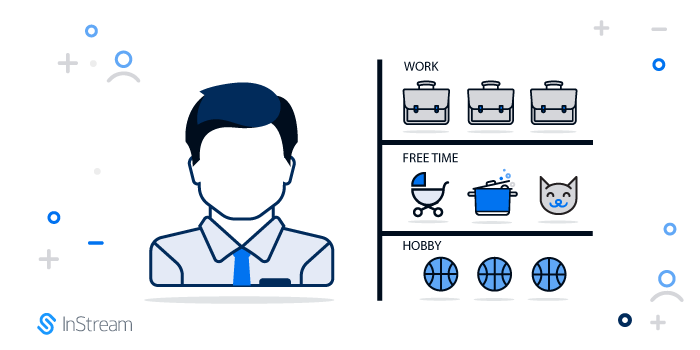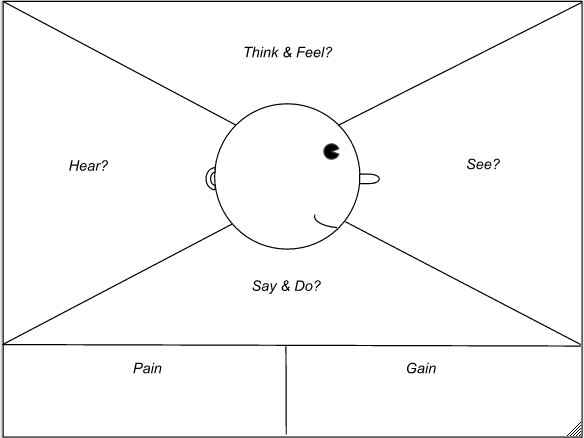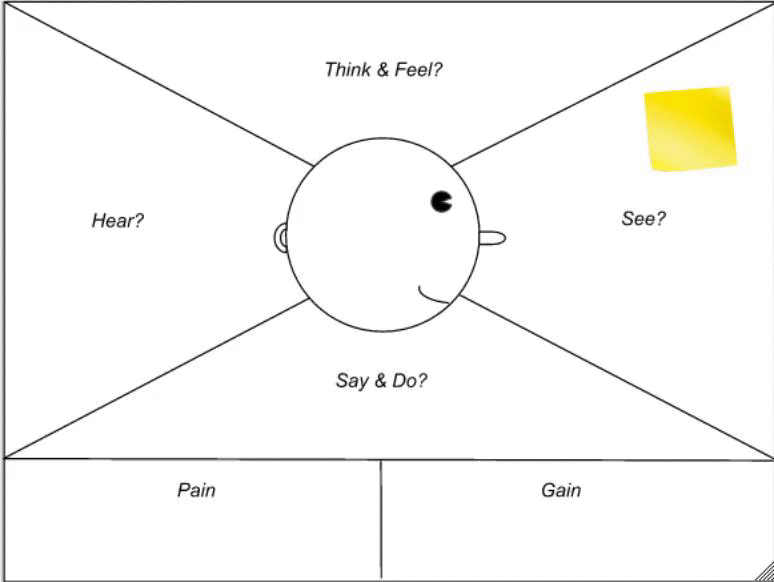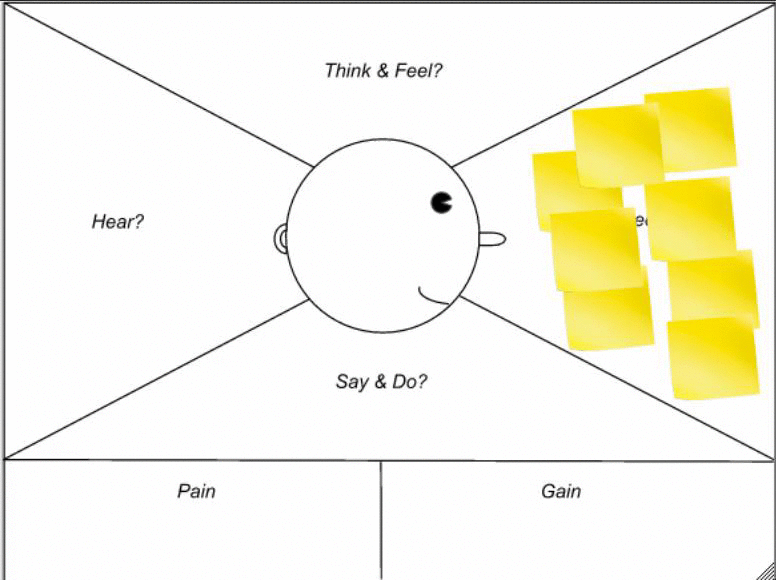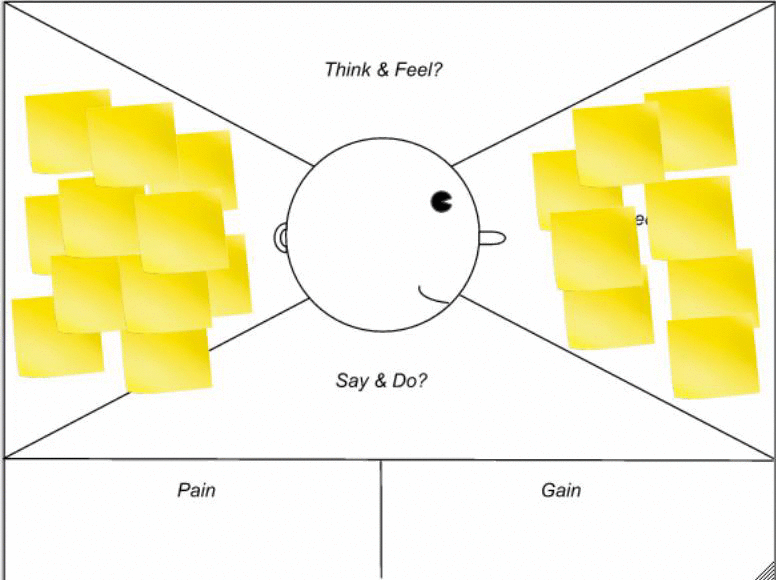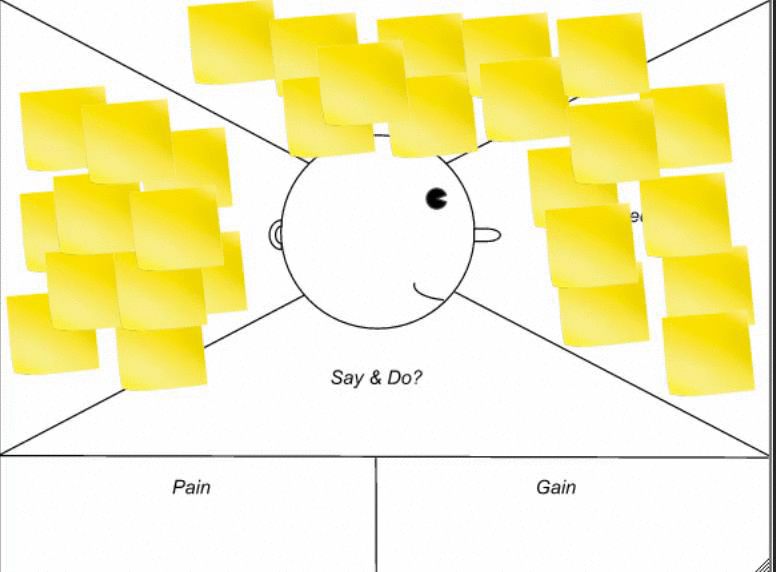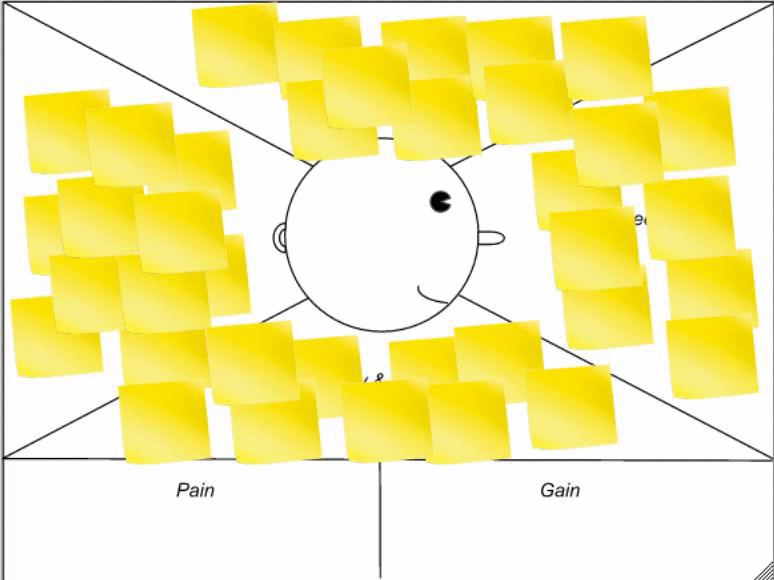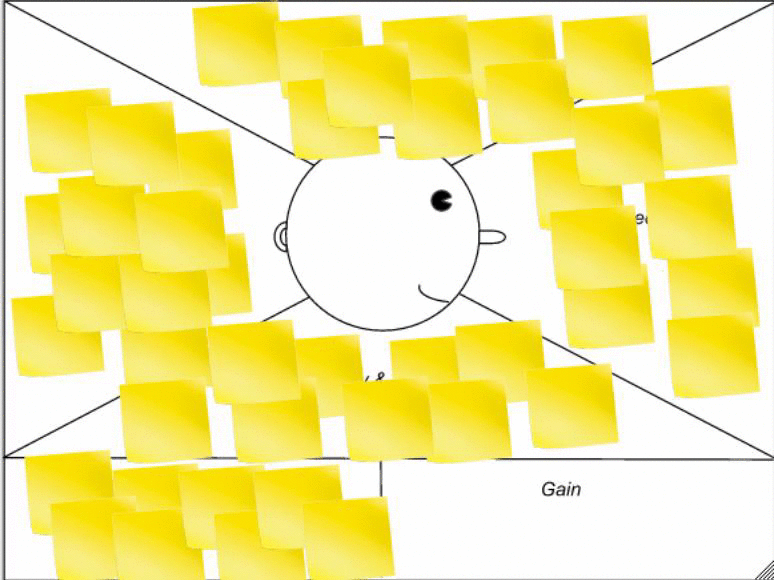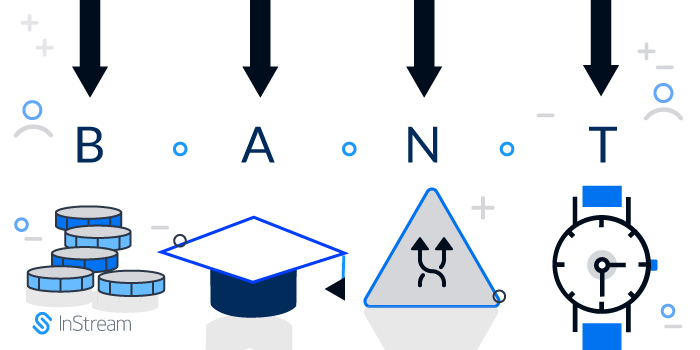Who is your customer? What are his duties? In what way does your product solve his problems? What benefits will your solution bring him? By what emotions is he driven at everyday work? What makes him satisfied and what makes him feel stressed? How to reach out to him? Who is a decision-maker and who are your advocates?
If you cannot answer these questions yet, that’s bad – both for you and for your whole team. Understanding your customers’ needs is the basis for the effective sales. Whichever product you offer, you need to remember that people do not buy functions, shapes, products or services.
They buy benefits, emotions…a vision that you should instill in them.
In this article, I will show you a few cool ways to define your customers’ needs. The methods I will present were not invented by me, but I use them on a regular basis and I recommend you to the same.
Who is your customer?
While creating your start-up probably you’ve come across Lean Canvas. Thus, you can define your market, business model and a prospective customer. If not, I recommend to find this phrase in Google.
I am curious, however, whether you devoted sufficient time to consider who exactly your customer is? What is he like? What does he like and how to talk to him? What are his needs?
There is only one 100% effective method of getting to know your customers.
If you want to get to know your customer’s needs – just ask him about them!
[Tweet “If you want to get to know your customer’s needs – just ask him about them!”]
Honestly, I don’t know a better method. Learn to listen and be open to everything that you’ll hear. Analyse and draw conclusions. Turn off your computer, take a notebook and arrange meetings with a few customers.
Brian Chesky, co-founder of Airbnb, when starting up his business he was regularly meeting with each customer and kept asking about all the details concerning his needs. He wasn’t doing it because he had to. He was doing it because he wanted his product to really solve someone’s problems.
Stefan Batory, founder of iTaxi said some time ago at Hive61 in Poznań, that before starting his own company he had been running from taxi to taxi and asking each driver around 100 questions from the prepared list. He wanted to be sure that he understands the industry and the problem that he notices is real.
Start listening, stay curious. Each piece of information about your idea is precious, especially negative feedback.
Having done that, there are a few ways to systematize this knowledge, build this up together and put it into practice. One of them is our CRM software – InSteam, where you can add some notes about your clients.
When our product was launched, we analysed our first customers very carefully. The knowledge that we have now helps us today build better relationships with customers, speak their language and precisely point out the benefits that they are looking for.
Below, I present a few methods.
Step 1. Define your customer profile
Our team has defined a few general profiles of the prospective customers. Earlier, we had set several criteria such as: company size, industry, country, decision-maker.
As a result, we came up with such a list:
- small and medium companies, offering SaaS products, Poland, VP of Sales
- small and medium companies, long-term services, Poland, VP of Sales
- small and medium companies, software for business, Poland, VP of Sales
Having defined the first profiles, we started to analyse them more carefully.
Profile analysis – method 1
You will need an A4 sheet, a pen, also sticky notes may be helpful.
Let’s take the first company profile.
Small and medium companies, offering SaaS products, Poland, VP of Sales
In the middle of the A4 sheet write down the selected profile.
We will be analysing 4 factors that have a direct influence on our customers.
- Environment – their business environment, partners, customers, market
- Processes – what business processes (that are somehow connected to our product) take place in their company
- Problems – what problems they face within these processes
- Solution – what solution they may be seeking
Our task will be to fill each field with our ideas and suggestions. I will be still referring to our first company profile as an example:
Small and medium companies, offering SaaS products, Poland, VP of Sales
Environment
How does your customer’s business environment looks like? Write down all possible options. In our case the business environment include:
- Corporate customers
- Business partners
- Distributors
- Competition
Processes
What business processes, that are somehow connected to our product, take place in the customer’s company? We have defined:
- New customer acquisition
- Opportunities handling
- Customer retention
- Support/Help Desk
- Cooperation with partners and distributors
Problems
What problems does our customer face within the above-mentioned processes? We have written down:
- Collecting customer data and its management
- Monitoring the effectiveness of salespeople
- Information sharing within teams
- Low sales
- Problems in communication with customers
- Lack of suitable reporting
Solution
What solution may your customers be seeking?
- Having all the information in one place, easy access to it, no manual data entry
- Communication monitoring, automatic record of e-mails and phone calls
- Effective management of all processes, sales funnel, notification system
- Automatic reporting
Segregating all the information in this way helped us understand better the customers’ needs (that match the profile we have described). While calling them or exchanging e-mails, our team can effectively define the customers’ needs by asking them the appropriate questions.
When we present the product, we focus on the processes that take place in the customer’s company, we evoke some examples of the problems that have managed to define within the same industry. We propose practical solutions.
[Tweet “We propose practical solutions.”]
Obviously, every customer has different requirements, face different problems. However, systemising this knowledge helps us understand better the customer position. In sales, empathy is the key. I always say:
Stop selling. Start listening!
Profile analysis – method 2
You can find the second method in the book entitled Business Model Generation, by Alex Osterwalder.
This method helps understand the customer from the emotional side. This knowledge is also really useful in a conversation. Thanks to this knowledge we can understand the scale of the problem the customer is facing, what emotions it arouses, what influences his decisions and with what concerns he is struggling.
The tool that we will be using is referred to as an empathy map.
Similarly as in the first method, we will avail of the same customer profile.
Small and medium companies, offering SaaS products, Poland, VP of Sales
Using the empathy map, we will be filling in individual fields with our answers to 6 simple questions.
How does it work in practice?
Order a pizza, open the window to have an access to fresh air. Hang the empathy map on the wall (in the form of a large sheet). Take the sticky notes and stick all your ideas in the relevant places. Then, analyse everything and write it down.
Remember – there are no stupid ideas!
1. What does the customer see? – environment, market offer.
What offers of products does the customer receive on a daily basis? What happens within the industry? What solutions are currently popular? What his co-workers are doing?
Examples:
- Employees do not enter the data
- Our mailbox is not in order
- There are a lot of solutions but these do not meet our requirements
- There are a few Polish solutions
- We have several e-mail addresses, but we have to integrate it somehow
- We have a large customer base, but mostly unsorted
2. What does the customer hear? what’s new within the industry, what co-workers say
What opinions have an influence on him? Whose opinions are these? What media channels does he listen to?
Examples:
- Satisfied customer is the key to success
- Focus on the customer, good customer service, plan your sales activities
- Take care of your sales team
- SaaS products are in fashion now – these are profitable
- Our team needs a tool to communicate
- We need to put our customer base in order
3. What does the customer think and feel? – what is the most important for him, what is he currently working on, what does he find stressful? What are his plans and where is he heading?
What emotions have an impact on his decisions? Why does he get stressed? What task does he need to complete? What outcome is he expecting?
Examples:
- I need to streamline communication in our team
- Our team needs to improve the quality of customer service
- We need to increase sales
- I don’t like our current CRM
- Why are all the CRM systems so complicated?
4. What does he say and do? What attitude does he present?
What does he say to other people? Pay attention to what he thinks, what makes him feel stressed and what he keeps repeating and telling other people (outside of the company).
Examples:
- Our company is distinguished by respect to customers and outstanding customer service
- We put our customers’ needs in the first place
- Efficient communication is our priority
- We are most happy when our customers’ needs are met
5. Pains– fears, frustrations, obstacles
What frustrates the customer the most? What problems is he facing and what are his fears?
Examples:
- New CRM will take us a lot of time (which we don’t have)
- I can’t find the solution which fulfills all our needs
- Is SaaS solution safe?
- What if we don’t put the customer data in order on time?
- Will my team like new solution?
6. Benefits– needs and desires, measure of success
What does he constitute the measure of success? What is he expecting? What goals should he achieve?
Examples:
- Automatic sales processes
- Higher quality of customer service
- Satisfied customers, lots of recommendations
- Higher sales
- Higher team morale
Conducting such an exercise brings several benefits:
- Collected materials will help your team understand the customer’s needs
- It may serve as a great training for new salespeople in your team
- Your team can learn the language of benefits and is able to define the customer’s needs
- Each minute that you spend on thinking of the customer makes that your product is even more adjusted to their needs
Storytelling – summary
The last exercise that we have conducted is called storytelling. This is one of my favourite methods. It works best as a summary of all the exercises. Already in childhood, we were told fairytales and we used to imagine its main characters. This sort of exercise helps us in developing listening skills, understanding sb’s needs as well as teaches us empathy.
Each member of our team got a task to tell us a story of the customer on the basis of the gathered information. Everyone was describing step-by-step all the important factors that we had previously described.
See the example below.
Small and medium companies, offering SaaS products, Poland, VP of Sales
Thomas, VP of Sales
Thomas manages a sales team in the company ForBiznes. The company specialises in the software for business production. 11 people work in Thomas’ department. These are mainly young salespeople aged 22-30. Their main product – system for monitoring the working time is offered to the companies all over the world. The company is relatively young, thus, it is still developing rapidly. Thomas has now problem with the efficient management of all the processes that take place inside the company. The CRM system that they chose and invested a lot of time in proved to be highly ineffective. All data has to be entered manually and the employees do it carelessly. The database becomes outdated and filled with worthless data.
The system is not integrated with e-mail, so the employees lose a lot of time on the recording of the communication or do not do it at all. Thomas is afraid of what can happen in the next months. The teams excel at customer acquisition but the lack of a proper tool cost them a lot of work. He would like to implement a new solution, however, he has concerns about whether now is the time for it. What’s more, he hasn’t found the solution that would fulfill all their needs so far. He would like to automate all his processes. He would like to ensure that his team always works at 110%. Colleagues in the industry told him a lot about SaaS solutions, however, Thomas has some doubts about the safety of these solutions.
After listening to this story, the rest of the team had to propose an appropriate answer.
What emotions should we rely on? What benefits should be presented as the main ones? What effects could Thomas be expecting while using our solution?
I hope that these methods will help you understand your customers better. If you care about good relations, customers who recommend your product, make sure that you really understand their needs. Do not suggest the solutions to the customer, keep asking and write down your answers. Stay curious and be sincere in what you’re doing.
Especially if you care about long-term relations with customers. A one-time sale is simple. Customer retention requires sincere intentions – and these are more valuable than any techniques.
Ps. This entire article describes how to define a prospective customer and a decision-maker. Remember that apart from the decision-maker, in each company, there are also so-called advocates. Most often it is them who are end-users of your solution. Remember a few important things:
- show the advocates that you understand their work and that you are here to help. Do not sell. Be honest.
- a person in charge in 90% cases while making a decision, asks the team about their opinions about the new solution. With the advocates on your side, there is a greater possibility that your solution will get chosen.
- show the advocates that your solution is not only for the person in charge but also for them. Be their partner!
We will be back with more soon!
CEO at InStream. Sales Advisor.


